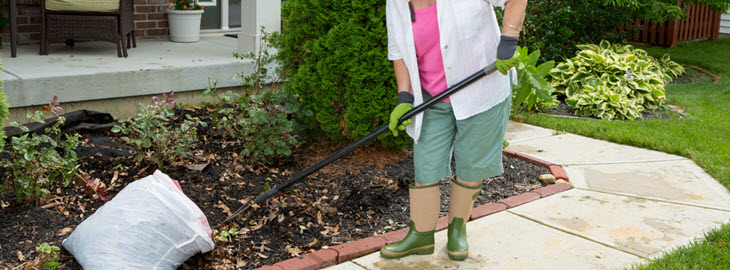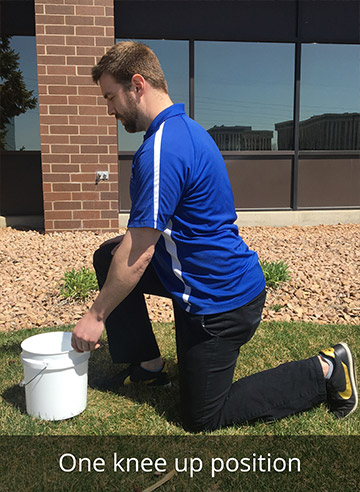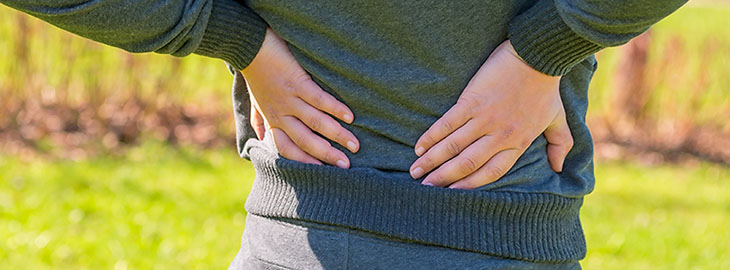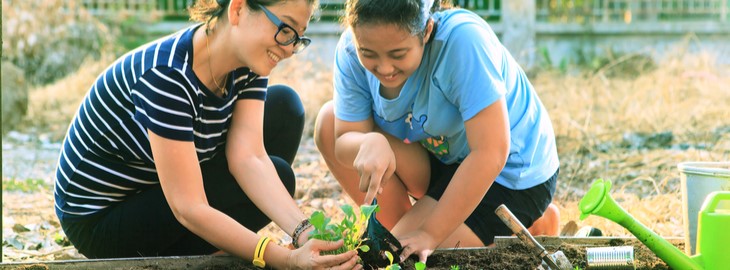
Yard work giving you back pain?
A physical therapy assistant from Physicians Neck & Back Center shares 6 tips to help you avoid back pain as you get your lawn and garden in tip-top shape.
Whether you’re gardening, raking or weeding, yard work can be a big cause of back pain this time of year. If you're not careful, a long day in the yard can take a toll on your body, especially your back.
Many of the patients I work with at Physicians Neck & Back Center enjoy these outdoor activities but are worried about their low back pain flaring up. Don’t let that stop you! Yard work can be a great way to stay active if you follow a few key tips:
-
Warm up before heading outside
Take five to 10 minutes to warm up prior to jumping into gardening or yard work. I recommend a short walk followed by a few minutes of stretching your low back, arms and legs. -
Get down on one knee
No, not to propose. But if you’re planting or weeding, instead of being on both knees, try having one leg up to stabilize your low back.

You can also use the side-sitting position to decrease stress on your lower back, or consider using a pad for support or a small stool to sit on.

With any of these, try to avoid rounding your low back. Focus on keeping a neutral spine – not an arched one.
-
Pivot, don’t twist
Pivoting your body is always the best option. That means moving your feet and hips in the same direction as your upper body, instead of keeping them planted and twisting at the spine. If twisting is unavoidable, make sure to engage your core by pulling your belly button in toward your spine as you move. -
Shuffle as you rake
Whether you’re raking dead grass in the spring or fallen leaves in the fall, think “small strokes.” Instead of keeping your feet planted and bending your back to extend your reach, use smaller strokes and shuffle your feet back and forth. I share similar advice for mowing the lawn. Stay in an upright posture and keep the lawnmower handle close to your body.
-
Bend your knees, not your waist
When picking up heavier objects, such as large bags of leaves, sticks or weeds, squat down by bending at your knees, not your waist. Also practice good lifting habits by keeping heavy things close to your body. And if you have a lot of material to haul (rocks, mulch, etc.), use a garden cart or wheelbarrow to help. -
Give yourself a break
With all of these tasks, it’s important to change positions and take frequent breaks. Rotate between tasks as you go to avoid putting too much stress on one part of your body. For example, instead of raking, weeding and then pruning for an hour each, rake for 20 minutes, then weed for 20 minutes, then prune for 20 minutes. Take a short break between each task, and then restart the circuit. It’s also a good idea to stretch and ice your low back once you’re finished.
Around 80 percent of adults will experience back pain at some point in their lives, but it doesn’t have to hold you back from doing what you love. My final tip is to ask for help! The more you can divide up the work, the less stress you’ll put on your spine – and the sooner you’ll be able to enjoy your beautiful lawn or garden!
About Kelci Fraser, PTA, B.S.Kin.
Kelci Fraser is a physical therapy assistant at Physicians Neck & Back Center, where she specializes in caring for patients with chronic to acute neck and back pain. Kelci has her Bachelor of Science in Kinesiology from the University of Minnesota and studied Physical Therapy at St. Catherine's University. She enjoys staying active by playing volleyball a few nights a week and doing MRT workouts at the gym.



